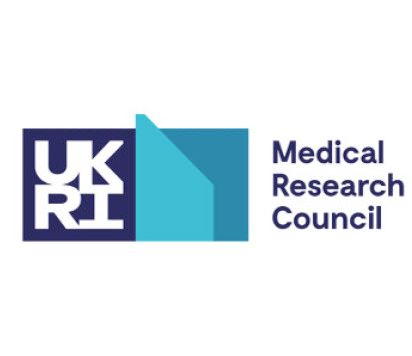2018/19 Seminars
- Prof Valerie O'Donnell, Vascular inflammation and lipidomics of ApoE
- Dr Katie Lunnon, Epigenetics in AD
- Prof Giles Hardingham, Degeneration and resilience
- Prof Michael Heneka, Alzheimer's disease and innate immunity
- Dr Lenore J Launer, Epidemiology to guide discovery
- Prof Seth Grant, Synaptome Mapping
 Vascular inflammation and lipidomics of ApoE
Vascular inflammation and lipidomics of ApoE
Guest lecture - Tuesday 5 February 2019
Professor Valerie O’Donnell
Director, Division of Infection and Immunity & Co-Director of Systems Immunity Research Institute, Cardiff University
Biography
Valerie O’Donnell is currently Director of Division of Infection and Immunity at Cardiff University, and Co-Director of Systems Immunity Research Institute which she co-founded in 2016 (£4.2M). She is Strategic Management lead of the LIPID MAPS Gateway (www.lipidmaps.org) which is a Wellcome Trust funded bioresource, joint led with UCSD and Babraham, and with over 1M users annually. She supervises an interdisciplinary group of scientists with biomedical, clinical and physical sciences backgrounds. She is an ERC Advanced Investigator and lipid biochemist whose research is focused on using mass spectrometry for discovery and characterization of new lipid mediators of inflammation. For the last 10 yrs she has studied how specialized lipids generated by circulating vascular cells regulate inflammation, wound healing and thrombosis. She particularly focused on around 150 molecular species of lipids termed enzymatically-oxidized phospholipids (eoxPL) made by platelets, neutrophils, monocytes and eosinophils. They were discovered, characterized and chemically synthesized in her group, and then analyzed in vitro and in vivo in human clinical samples and mouse models, for their biological and pathophysiological actions. In collaboration with Collins and Krönke, she showed that they are essential for normal blood clotting, and conversely are elevated in thrombotic disease (1-3). The detailed biochemical and biophysical mechanisms of action were elucidated. Valerie also showed they regulate neutrophil antibacterial actions and transcriptional activation in monocytes. With Conrad, a key role for eoxPL in a cell death pathway, ferroptosis, was found (4). eoxPL are an essential part of the healthy innate immune system, however when inappropriately generated in the blood stream or in excess, they contribute directly to vascular inflammation.
1. Lauder, SN et al (2017) Networks of enzymatically oxidized membrane lipids support calcium - dependent coagulation factor binding to maintain hemostasis. Science Signaling Vol. 10, Issue 507, eaan2787, DOI: 10.1126/scisignal.aan2787
2. Uderhardt et al (2017) Enzymatic lipid oxidation by eosinophils propagates coagulation, hemostasis and thrombotic disease J Exp Med 214(7):2121-2138. doi: 10.1084/jem.20161070
3. Slatter et al (2016) Mapping the human platelet lipidome reveals cytosolic phospholipase A2 as a regulator of mitochondrial bioenergetics during activation. Cell Metabolism 23, 930-934, with commentary by FitzGerald, GA, Human platelet lipidomics: variance, visualization, flux and fuel. 23, 757-759
4. Friedmann Angeli et al (2014) Inactivation of the ferroptosis regulator Gpx4 triggers acute renal failure in mice. Nature Cell Biology (DOI: 10.1038/ncb3064) 16, 1180–1191 [IF 20.7]
Abstract
Enzymatically-oxidized phospholipids (eoxPL) are generated through regulated processes, by attaching eicosanoids or prostaglandins to phospholipids (PL) in immune cells, following acute agonist activation. These lipids comprise structurally diverse families of biomolecules, and it is becoming increasingly clear that they possess significant immunoregulatory roles in both health and disease. The idea that oxidized PL (oxPL) can form via enzymatic pathways and signal biologically in their own right has only recently been realized. eoxPL form through the co-ordinated actions of cellular lipoxygenases, cyclooxygenases, and Land’s cycle enzymes. They display emerging roles in cellular events that include ferroptosis, apoptosis and blood clotting, and diseases such as arthritis, diabetes and cardiovascular disease. In our lab, we used several mass spectrometry approaches (precursor scanning, untargeted) to map eoxPL in human blood cells, including platelets, neutrophils and monocytes, both in isolation and during formation of a static clot. Platelets generate over 100 molecular species on thrombin activation, and mice that lack the ability to generate these show a consumptive coagulopathy and are protected against atherosclerosis and aortic aneurysm. Our recent studies have characterised the biophysical mechanisms by which eoxPL promote blood clotting, and in this talk, our recent studies on their role(s) in vascular inflammation and hemostasis will be presented. We are currently extending our work to the characterisation of the role of these unique lipids in brain vascular health and disease, but this is very early stage so preliminary data on this will be presented.
Host
Professor Paul Matthews (p.matthews@imperial.ac.uk)
Contact Dr Jennifer Podesta (UKDRI@Imperial.ac.uk) to arrange to meet with the speaker
Date and time
Tuesday 5 February 2019
12:30 - 13:30
Light lunch available from 12:00 in the Wolfson Cafe
Venue
Seminar rooms 4 and 5, Wolfson Education Centre, Hammersmith Campus
Epigenetic mechanisms in Alzheimer’s disease
 Guest lecture - Wednesday 30 January 2019
Guest lecture - Wednesday 30 January 2019
Dr Katie Lunnon
Associate Professor in Epigenetics
University of Exeter Medical School
Biography
Katie is an Associate Professor in Epigenetics at the University of Exeter Medical School, with a particular interest in dementia. Her group published the first genome-wide, cross-tissue epigenome-wide association study (EWAS) in Alzheimer’s disease (AD) (Lunnon et al, Nat Neurosci-2014), which has been cited >200 times. This year her group published a follow up EWAS paper highlighting differential DNA methylation across an extended 48kb region in the HOXA3 gene in individuals with AD (Smith et al, Alzheimers Dement-2018). Katie currently leads a team of three postdoctoral researchers and five postgraduate students, who are utilising a range of cutting-edge methodologies to elucidate the role of epigenetic mechanisms in dementia. They are using sophisticated bioinformatics approaches to meta-analyse all available AD EWAS datasets and also perform integrative multi-omics analyses in well characterised cohorts to combine different levels of molecular information. They are also performing a range of wet lab molecular and cellular biology experiments, including epigenetic editing in induced pluripotent stem cells (iPSCs).
Katie was recently awarded the Alzheimer’s Research UK Young Investigator of the Year award in 2017 and an Alzheimer’s Society Dementia Research Leaders award in 2015 for academic achievements. Katie is module lead for the final year double (30) credit module "Frontiers in Neuroscience" on the BSc Medical Sciences program, co-ordinator of the Alzheimer’s Research UK South West Network Centre and sits on the ARUK grant review board.
Host
Professor Paul Matthews (p.matthews@imperial.ac.uk)
Contact Dr Jennifer Podesta (UKDRI@Imperial.ac.uk) to arrange to meet with the speaker
Date and time
Wednesday 30 January 2019
12:30 - 13:30
Light lunch available from 12:00 in the Wolfson Cafe
Venue
Wolfson Education Centre
Hammersmith Campus
Directions to the Hammersmith Campus and campus map are available on the College 'visit Hammersmith' web page
Signaling pathways to degeneration and resilience in the CNS

Guest lecture - 14 November
Professor Giles Hardingham
Associate Director, UK Dementia Research Institute at
The University of Edinburgh
Biography
Professor Giles Hardingham studied biochemistry at the University of Cambridge before completing a PhD at the MRC Laboratory of Molecular Biology. He established his laboratory at the University of Edinburgh in 2002 as a Royal Society University Research Fellow, moving onto a MRC Senior Non-Clinical Research Fellowship in 2010. He currently holds the City of Edinburgh Chair of Pharmacology and is an Associate Director of the UK DRI, leading the Edinburgh centre.
Selected references
McKay S et al (2018) Cell Reports
Hasel P et al (2017) Nature Communications
Hardingham GE et al (2018) Nature Reviews Neuroscience
Hardingham & Do (2016) Nature Reviews Neuroscience
Does innate immunity contribute to Alzheimer's disease?
 Guest lecture - 4 October
Guest lecture - 4 October
Professor Michael T Heneka
Department of Neurodegenerative Disease and Geriatric Psychiatry
University of Bonn
Bonn, Germany
Accumulation of neurotoxic amyloid-b peptides along with neurofibrillary tangle formation represent key pathological hallmarks in Alzheimer’s disease (AD). Despite the brain has been viewed as an immune privileged organ, increasing evidence from translational, genetic and pathological studies suggests that activation of distinct innate immune pathways represents a third important component, which, once initiated, actively contributes to disease progression and chronicity. Microglia play a pivotal role in this immune response and are activated by binding of aggregated proteins or aberrant nucleic acids to pattern recognition receptors. This immune activation leads to the release of inflammatory mediators but also distracts microglia cells from their physiological functions and tasks. NLRP3 inflammasome activation and release of ASC specks contribute to spreading of pathology and impairs microglia clearance mechanisms together contributing to neuronal degeneration and spatial memory deficits. In keeping with this, inhibition of this immune pathways shows protection in cellular and murine models of AD. Modulation of the microglia driven innate immune response at key signalling steps may therefore provide protection and may alter progression of disease. Therefore, antiinflammatory treatment strategies should be considered. Data on microglial activation in AD along with suggestions to modify and alter the pro- into an antiinflammatory phenotype will be reviewed and discussed.
Using epidemiology to guide discovery: Repurposing drugs to prevent dementia - 19 June 2018
 Special guest
Special guest
Dr Lenore J. Launer
Senior Investigator, Chief, Neuroepidemiology Section
Intramural Research Program,
National Institute on Aging, NIH
Basing drug target identification on observational epidemiologic cohort studies has many unique advantages that complement other strategies for drug discovery. The case of hypertension as a risk factor for Alzheimer’s disease provides an example of using observational epidemiologic data to identify drugs that reduce AD risk. A brief overview will be given on blood pressure-brain epidemiologic and trial findings, as well as methodologic issues in studying these relationships. Preliminary data will be presented from a meta-analysis of population-based follow-up studies examining the risk for dementia-associated various anti-hypertensive medications.
Host
Dr Maksym Kopanitsa (m.kopanitsa@imperial.ac.uk)
Date and time
Tuesday 19 June 2018, 15:00 (with refreshments available from 14:30)
Venue
Praed Street seminar room, St Mary’s Faculty of Medicine Building
Directions for finding St Mary's Campus are available on the College 'Visit St Mary's' web page
Synaptome mapping: new technical approaches for unravelling the molecular architecture of synapses and the brain - 22 June 2018
 Special guest
Special guest
Professor Seth Grant, FRSE, FMedSci
Centre for Clinical Brain Sciences
University of Edinburgh
Synapses are hallmarks of brain complexity – they are found in vast numbers and contain over 1,000 protein types. What is the purpose of this molecular complexity, how did it arise, and is there any logic to its organization?
We have addressed these issues using large-scale molecular approaches focused on the postsynaptic terminal of excitatory synapses. We found that postsynaptic proteins are hierarchically assembled into signalling complexes and supercomplexes, and these are distributed between synapses to generate synapse types. Whole-brain synapse maps revealed striking synaptic diversity and a “synaptome architecture” of the brain. Synaptome maps correlate with the structural and functional connectome, indicating that maps of synapse molecular diversity are features of systems-level organization.
We also analyzed the postsynaptic responses to elementary patterns of neural activity and a repertoire of innate and learned behaviours in mice with mutations in >50 postsynaptic proteins. The results of these experiments, together with the synaptome map data indicate that synapse diversity is a means of storing and recalling information in the brain. Synapse proteome complexity may generate a virtually limitless number of synapse types and synaptome maps offering immense information storage that can be accessed by patterns of activity. Autism and schizophrenia mutations disrupted the hierarchical assembly of supercomplexes and synaptome map architecture, the responses to sequences of activity and the behavioural repertoire.
Host
Dr Maksym Kopanitsa (m.kopanitsa@imperial.ac.uk)
Date and time
Friday 22 June 2018, 13:30 (with a light lunch available from 13:00)
Venue
E519, Burlington Danes Building, Hammersmith Hospital
Directions for finding Hammersmith Hospital are available on the College 'Visit Hammersmith' web page

